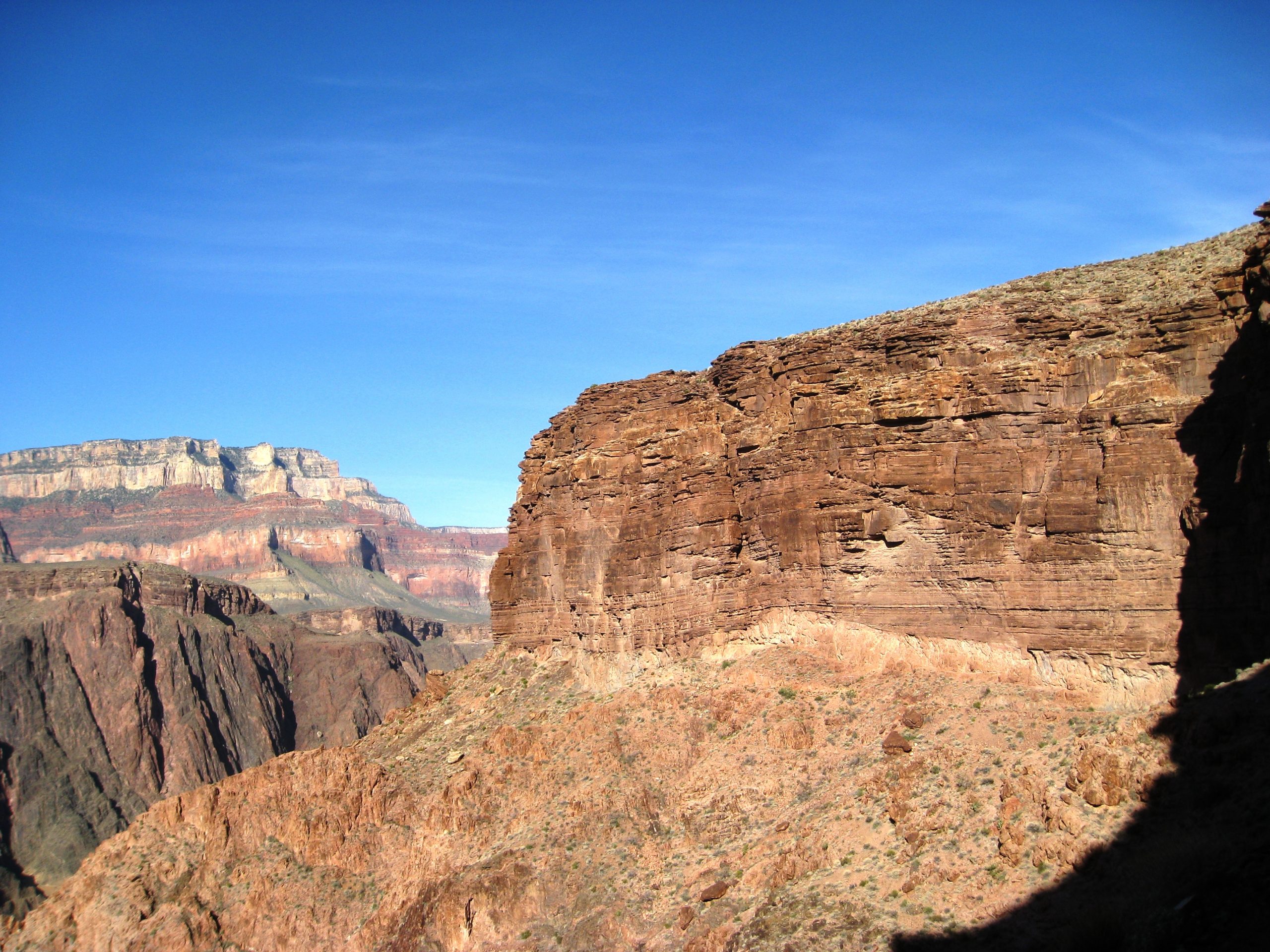Understanding the history of the Earth has always been a challenge, one that geologists seek to overcome using evidence hidden away in the rock layers. However, geologists are currently presented with the unique instance of a geological unconformity that spans the continents. A geological unconformity refers to a break in a continuous rock record which separates rock masses of different ages. This boundary is created between differently aged rocks and is caused by erosion or a period of nondeposition. Small gaps are quite common, however the unconformity that geologists are baffled by is one known as The Great Unconformity. The Great Unconformity is a term that describes several large gaps in the geological timeline that spans across the globe and it is different as it represents almost 250-1200 million years of history that has seemingly vanished from the record.1
A primary example of the Great Unconformity lies right in our backyards: the Grand Canyon. Although first discovered in 1857 by the Ives Expedition, the strange missing sequence was brought to geologists’ attention when John Powell pointed out that there were three main groups of rocks exposed in the Grand Canyon’s cliffs in 1869. Originally, Powell used this term to describe the contact where the Layered Paleozoic Rocks lie on top of the Vishnu Basement Rocks. In just that area, over 1.2 billion years of Earth’s history is missing. This gap in the rock record accounts for almost 30% of Earth’s history, spanning from the pre-Cambrian era to the Cambrian era.1 This lack of history during this time period is particularly strange as it denotes a gap in history during the time period when life on Earth began to become multicellular. Prior to the Cambrian explosion, most living organisms were simple and unicellular with very few organisms registered in the fossil record. By the end of the Cambrian era, land adaptation became more common with the first plants blooming during this time.2 Because of the absence of the rock layer, our understanding of this time period becomes murkier.
Currently, one of the main theories used to explain the Great Unconformity hypothesizes that glacier movements may have eroded the lost layer in certain portions of the world. However a new theory, posited by Dr. Peters and Dr. Gaines in their paper, “Formation of the ‘Great Unconformity’ as a Trigger for the Cambrian Explosion”, claims that the sediment in what would be the Great Unconformity contained a possible trigger for the Cambrian era.3 They found that in most places, Cambrian sedimentary rocks were deposited on the surface with other, much older, continental crystalline basement rocks. From this, they deduced that the Great Unconformity was the termination of a long period of weathering due to excess flooding and sedimentation. This erosion of the basement rock that covered the continental interiors, resulted in the exposure of silicate mineral surfaces. This newly exposed rock chemically weathers almost three times faster than older material resulting in rapid changes in the chemistry of the seas, influencing global biogeochemical cycling.3 The proof of an atmospheric increase in the consumption of various ions from the oceans can be found in the evidence of an increased water reservoir size and enhanced continental crustal weathering. Traces of increased carbonate in precipitation can also be found in the geochemical and petrographic data from the outer detrital belt mudstones, a type of rock characterized by being held together with small bits of clay deposited near slow moving water. The presence of increased carbonate shows that it was possible for the excess erosion during this period to have caused the release of excess minerals which could have sparked the beginning of the Cambrian explosion.3
Almost 150 years since the discovery of the Great Unconformity, theories are still being made as to how the failure in Earth’s natural clock came to be. If we are able to understand how the Great Unconformity was made, we will more accurately be able to predict future geological events and our history. Dr. Peters and Dr. Gaines’ hypothesis that the Great Unconformity was due to erosion, releasing extra minerals that were crucial to the development of marine animals during the Cambrian Explosion. If that is to be true, we are offshoots of the life that the rocks gave birth to.
References
- The Great Unconformity. (n.d.). Retrieved March 8, 2024, from https://www.lpi.usra.edu/science/treiman/greatdesert/workshop/greatunconf/
- Flannery, T. Fridtjof (2024, March 1). Cambrian explosion. Encyclopedia Britannica. https://www.britannica.com/science/Cambrian-explosion
- Peters, S. E., & Gaines, R. R. (2012). Formation of the ‘Great Unconformity’ as a trigger for the Cambrian explosion. Nature, 484(7394), 363–366. https://doi.org/10.1038/nature10969
Image References
Cover Image: USA, brewbooks from near S. (2011). There is about a 1.2 billion year gap in the rock—That is the Great Unconformity, and this hike provided an excellent view. Great Unconformity. https://commons.wikimedia.org/wiki/File:Great_Unconformity_-_Flickr_-_brewbooks.jpg
